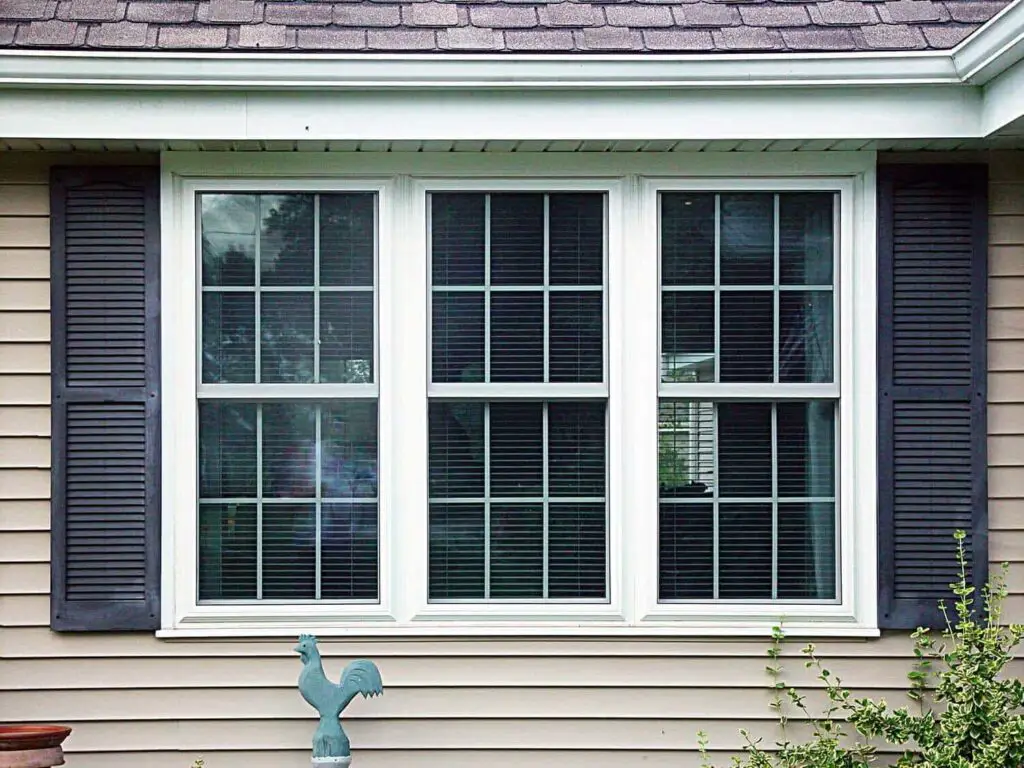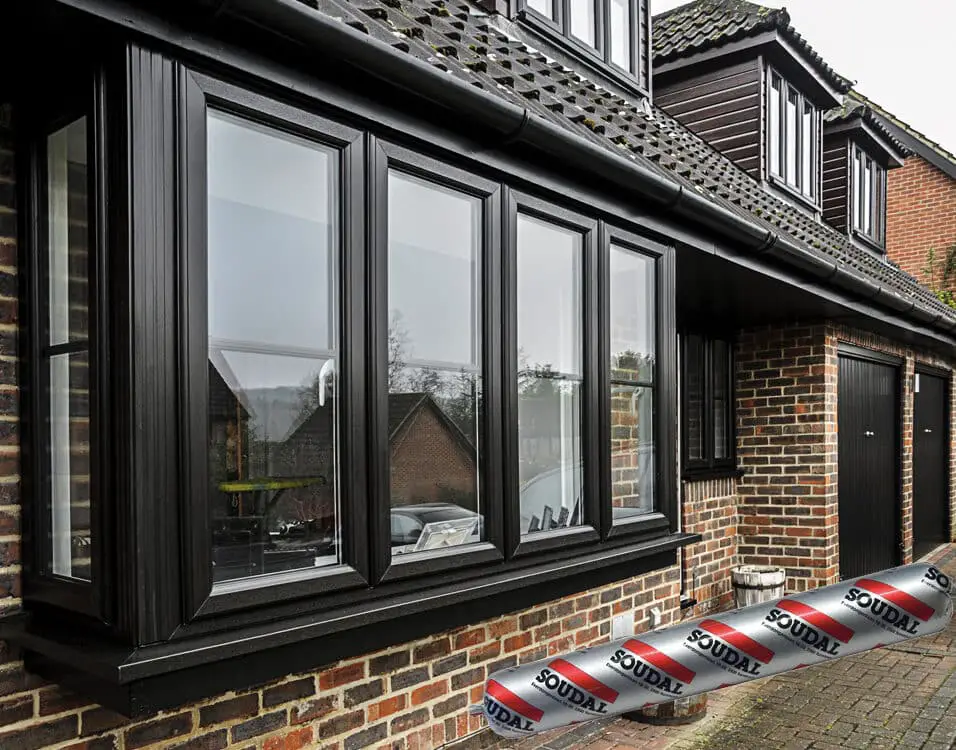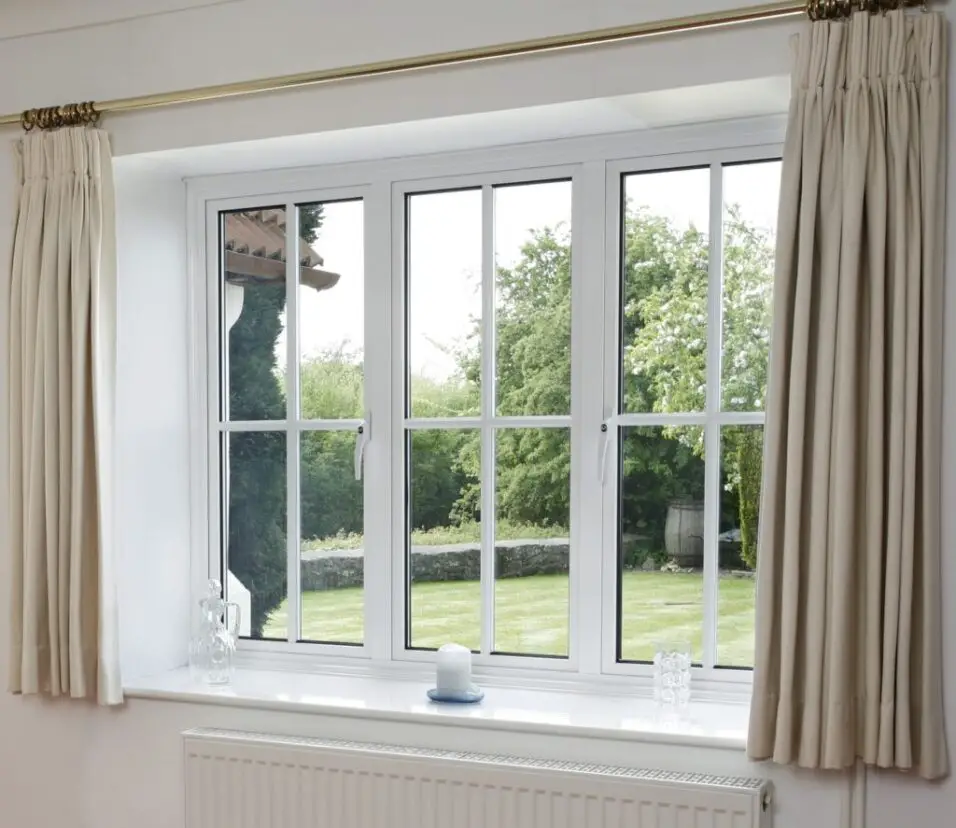How To Repair Rotted Window Frame Exterior
Introduction
How To Repair Rotted Window Frame Exterior: The charm of a well-maintained home often begins with its exterior, and one crucial element in preserving that appeal is repairing rotted window frames. Over time, exposure to the elements can cause wooden window frames to deteriorate, leading to not only an eyesore but also structural issues if left unattended. But fear not, for this comprehensive guide on “How To Repair Rotted Exterior Window Frame ” will equip you with the knowledge and skills to breathe new life into your windows.
In this guide, we will walk you through the step-by-step process of assessing the damage, gathering the necessary tools and materials, and executing expert-level repairs. Whether you’re a seasoned DIY enthusiast or a novice looking to embark on your first home improvement project, this guide will be your trusted companion.
With a focus on safety, aesthetics, and longevity, we’ll explore various techniques, from patching and sealing to complete frame replacement. By the time you’ve finished reading, you’ll have the confidence and expertise to tackle rotted window frame repairs, ensuring your home’s exterior remains as inviting as ever.

How do you fix rotted wood around a window frame?
The good news is that replacing the wood around a window doesn’t have to be an expensive or complicated fix. To deal with extensive rot around the sill or trim, remove the entire section, then cut a new piece to go in its place.
Fixing rotted wood around a window frame is essential to maintain the structural integrity and appearance of your home. Here’s a step-by-step guide:
- Assess the Damage: Start by examining the extent of the rot. Use a screwdriver or a similar tool to probe the wood gently. If it’s soft and crumbly, you likely need to replace it.
- Remove Rotted Wood: Carefully remove all the rotted wood. Use a chisel, saw, or wood scraper to get rid of the decayed material. Ensure you reach the healthy wood to create a stable foundation.
- Treat with Wood Hardener: Apply a wood hardener or consolidant to the remaining wood to strengthen it and prevent further decay. Follow the manufacturer’s instructions for application.
- Fill with Epoxy Filler: Use an epoxy wood filler to fill the void left by the removed rotted wood. Apply it in layers if needed, allowing each layer to dry before adding more. Shape the filler to match the contour of the window frame.
Sand and Smooth: Once the epoxy filler is dry and hardened, sand it down to achieve a smooth and even surface that matches the surrounding wood.
Prime and Paint: Apply a primer to the repaired area to seal it and ensure proper adhesion of paint. Then, paint the window frame to match the rest of the exterior.
Regular Maintenance: To prevent future rot, maintain the window frame by inspecting it regularly, repainting when necessary, and addressing any signs of deterioration promptly.
Can rotten windows be repaired?
We only recommend a repair if there is just a small amount of rot present. Avoid attempting a repair if more than 10% of the frame shows signs of rot. A large amount of wood rot will destabilize the frame which can cause a significant security risk.
- Minor Rotten Spots: If the rot is localized and not structurally compromising, you can follow the steps mentioned above to repair rotted wood around the window frame.
- Sash Replacement: If the rot is limited to the window sash (the moving part of the window), you can often replace just the sash, which is more cost-effective than replacing the entire window.
- Frame Repair: If the window frame itself is rotted but not beyond repair, you can remove the damaged portions and follow the same repair steps mentioned earlier.
- Full Window Replacement: If the window is severely damaged, it may be more practical and energy-efficient to replace the entire window. This is especially true for older windows that lack modern energy efficiency features.
Ultimately, the decision to repair or replace a rotten window depends on factors such as the extent of the damage, your budget, and your long-term goals for your home’s energy efficiency and appearance.
How do you harden rotted wood?
It’s worth drilling holes in the area that’s slightly beyond the rotten wood to ensure the rot doesn’t spread. Once you’ve removed the crumbling wood, use a wet rot wood hardener and apply it to the wood with a paintbrush. Don’t be afraid to lay it on thick and leave it to soak into the wood.
To harden rotted wood and prevent further decay, follow these steps:
- Remove Loose Material: Begin by removing any loose or crumbly wood around the rotted area. You can use a screwdriver, chisel, or similar tool.
- Apply a Wood Hardener: Purchase a wood hardener or consolidant from your local hardware store. Follow the manufacturer’s instructions for application. Typically, you’ll brush or spray the hardener onto the affected area, ensuring it soaks into the wood.
- Allow Drying Time: Give the wood hardener sufficient time to dry and penetrate the wood. This can take several hours to a day, depending on the product and the severity of the rot.
- Fill with Epoxy Filler: Once the wood hardener is dry, use epoxy wood filler to fill any voids or gaps in the wood. Shape the filler to match the contours of the surrounding wood.
- Sand and Finish: After the epoxy filler is dry and hardened, sand it down to create a smooth, even surface. You can then paint or finish the wood as needed to protect it from further moisture damage.
Remember that while wood hardeners and epoxy fillers can help salvage rotted wood, they are most effective when the damage is not too extensive. In severe cases, complete replacement may be necessary.
How do you repair rotted wood without replacing it?
Can rotted or damaged wood be repaired? Yes! You can repair rotten wood by first removing the rotting from the original board or joists. You can then fill the surrounding area with a soft wood polyester filler or wood patch using a plastic putty knife.
Repairing rotted wood without replacing it is possible for minor to moderate damage. Here’s a more detailed approach:
- Assess the Damage: Determine the extent of the rot. If it’s superficial or hasn’t compromised the structural integrity, you can proceed with repairs.
- Remove Rotted Material: Carefully remove all the decayed wood using a chisel, saw, or scraper. Ensure that you reach healthy, solid wood.
- Apply Wood Hardener: Use a wood hardener or consolidant to strengthen the remaining wood and prevent further decay. Apply it as directed by the manufacturer.
- Fill with Epoxy Filler: Fill the void left by the removed rotted wood with epoxy wood filler. Apply it in layers if necessary, allowing each layer to dry before adding more. Shape the filler to match the wood’s contour.
- Sand and Finish: Once the epoxy filler has dried and hardened, sand it down to achieve a smooth, even surface that blends with the surrounding wood.
- Prime and Paint: Apply a primer to seal the repaired area and ensure proper paint adhesion. Finish by painting the wood to match the rest of the surface.
- Regular Maintenance: To prevent future rot, regularly inspect and maintain the wood, repainting when needed, and addressing any signs of deterioration promptly.
Keep in mind that this method is suitable for cosmetic repairs and localized damage. For extensive rot or structural issues, it may be necessary to consider replacing the wood entirely for a long-lasting solution.
Why is window frame rotting?
Wood swells and warps when inundated with moisture, which leads to rot. Broken or damaged caulking also allows water to seep into the frame and your home. On the inside of the home, a leaky window frame is another sign of wood rot which causes the frame to bow and not adjoin appropriately with the window.
Window frame rot occurs due to several factors, with moisture being the primary culprit. Here are the main reasons why window frames may rot:
- Exposure to Moisture: Prolonged exposure to moisture from rain, snow, or even high humidity levels can lead to rot in window frames. Wood is a porous material that absorbs moisture, making it susceptible to decay if not adequately protected.
- Lack of Maintenance: Neglecting regular maintenance, such as painting or sealing, can leave window frames vulnerable to moisture infiltration and rot. Over time, paint can deteriorate, leaving wood exposed.
- Poor Installation: If windows are not properly installed with adequate flashing and sealing, they can allow water to infiltrate the frame and surrounding wall, promoting rot.
- Condensation: Interior condensation can also contribute to window frame rot. When warm, moist indoor air comes into contact with cold window surfaces, it can create condensation, leading to moisture damage over time.
- Insect Infestation: Certain wood-boring insects, like termites and carpenter ants, can damage window frames by creating tunnels and weakening the wood, making it more susceptible to rot.
Preventing window frame rot involves regular maintenance, including repainting or resealing as needed, addressing any water leaks promptly, and ensuring proper installation during window replacement or construction.
Can window frame be replaced?
Cracks or holes can be easy to repair, but if your window has damage all around the frame, it may be better to replace the entire window frame. Keep in mind that a window frame in bad condition can lead to poor insulation, higher energy bills, and even costly water damage from leaks.
Yes, window frames can be replaced. Window frame replacement is a common solution for addressing issues such as rot, damage, or the desire to upgrade to more energy-efficient frames. Here’s an overview of the process:
Assessment:
Begin by assessing the condition of your existing window frame. If it’s rotting, damaged beyond repair, or if you’re looking for an upgrade, replacement may be necessary.
Select New Frames:
Choose the type of window frames you want, considering factors like material (e.g., wood, vinyl, aluminum), style, and energy efficiency. Ensure that the new frames are the right size for your window openings.
Remove Old Frames:
Carefully remove the old window frame, including the sash (the moving part of the window), the casing (trim around the frame), and the frame itself. Take care to avoid damaging the surrounding wall during removal.
Prepare the Opening:
Clean and prepare the window opening to ensure a proper fit for the new frame. Check for any structural issues or water damage that need addressing.
Install New Frames:
Install the new window frames, starting with the window sill, followed by the side jambs, and finally the head jamb. Secure the frames in place with screws or nails.
Seal and Insulate:
Properly seal and insulate around the new frames to prevent drafts and water infiltration. Use caulk and insulation materials as needed.
Install Sash and Trim:
Reinstall the window sash, followed by the casing or trim. Ensure that everything is level and plumb.
Finish:
Finish the installation by applying exterior and interior trim, and paint or stain the frame as desired.
If you’re not a builder, replacing a window frame may require professional help.
What causes wood rot around windows?
How does wood rot happen? Wood windows are very vulnerable to the outside elements. If the window’s caulking has a gap, this can also allow water to leak in.
Here are the key factors that contribute to wood rot around windows:
- Moisture Exposure: Exposure to moisture from rain, snow, or humidity is the primary cause of wood rot. When wood is consistently wet, it provides an ideal environment for fungi to thrive and break down the cellulose in wood fibers.
- Lack of Maintenance: Failing to maintain the protective coatings on wood, such as paint or sealant, can allow moisture to penetrate the wood. Over time, these protective layers degrade, leaving the wood vulnerable to rot.
- Inadequate Flashing: Improper installation of flashing, which is designed to divert water away from the window frame, can lead to water infiltration and subsequent rot.
- Condensation: Interior condensation can contribute to wood rot if warm, moist air comes into contact with cold window surfaces, leading to moisture accumulation on the wood.
- Poor Ventilation: Inadequate ventilation in the wall cavities around windows can trap moisture, creating conditions conducive to rot.
- Insect Infestations: Certain wood-boring insects, like termites and carpenter ants, can weaken wood by creating tunnels, making it more susceptible to rot.
To prevent wood rot around windows, it’s crucial to perform regular maintenance, including inspecting for and repairing any damaged or deteriorating wood, resealing or repainting as needed, and ensuring proper installation and flashing during window replacement or construction.
Why is my window frame leaking during heavy rain?
Often, these leaks happen because the caulk or sealant around the window has gotten old and cracked, allowing rain to enter the house. The fix for this situation is simple – peel out the old caulking and replace it with new window caulking.
If your window frame is leaking during heavy rain, several factors could be contributing to the issue:
- Damaged or Deteriorated Sealant: Over time, the sealant or caulking around the window frame can degrade or crack, allowing water to penetrate. Check for gaps or damage in the sealant and reseal if necessary.
- Poor Window Installation: Improper installation of the window itself can lead to leaks. Ensure that the window was installed with proper flashing and a watertight seal.
- Clogged or Misaligned Drainage Channels: Windows often have drainage channels or weep holes that allow water to escape.
- Defective or Worn Weatherstripping: Weatherstripping around the window sash can deteriorate over time.
- Cracked or Damaged Window Panes: Cracked or damaged glass can allow water to enter. Inspect the window panes for any issues and replace them if necessary.
- Improper Sloping of Sills: The window sill should be sloped away from the window to encourage water runoff.
- Flashing Issues: Inspect the flashing around the window.
To address window frame leaks, start by identifying the source of the problem, which may require a thorough inspection. Depending on the cause, you may need to reseal, repair, or replace certain components of the window and its surrounding structure. If you’re unsure how to proceed, it’s advisable to consult a professional to prevent further damage and ensure a lasting solution.

Conclusion
Repairing rotted window frames is not just a maintenance task; it’s a restoration of your home’s beauty and integrity. By following the steps outlined in this guide, you’ve not only preserved the aesthetics of your house but also safeguarded it from further damage.
Remember, maintenance is key to a long-lasting home, and taking proactive steps to address rotted wood window frames will pay dividends in the future. So, whether you’re looking to refresh the appearance of your home or fortify it against the elements, this guide has empowered you to take action.
With your newly repaired and rejuvenated window frames, you can revel in the pride of a job well done and bask in the enhanced curb appeal of your home for years to come.







